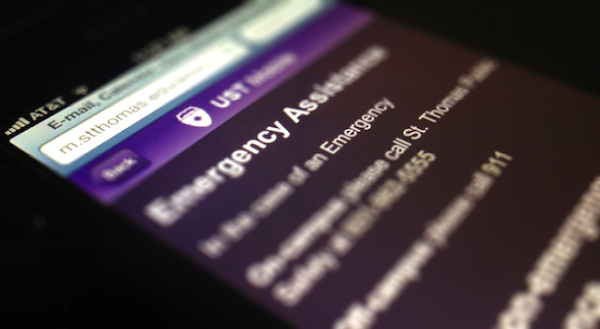Duty of care argument for telcos? If customer in radius of emergency situation (via GSM), alert first responders, possibly family? #iccm
Tweeted by Sanjana Hattotuwa, Special Advisor at the Foundation during a session that looked at responses to the traumatic Westgate incident in Nairobi during ICCM 2013 in Nairobi, this idea generated a lot of interest including from the GSM Association (GSMA).
The tweet was a question to the panel discussion which discussed how social media was inextricably entwined with the response to this incident. After the panel, Sanjana talked around the idea with panellist Charity Wayua from IBM Kenya, who expressed a keen interest in the idea and promised to take it up with Kenyan telcos and future work around this area.
The idea is a simple one. When during a sudden onset disaster or emergency, which is around a specific geographic area or location, a customer’s mobile is located, an alert is sent to the phone to ascertain if she/he is ok, failing which emergency services and designated next of kin are notified. The idea flips the model of location from push to pull – today, geo-location tweets is done, with varying degrees of accuracy and efficiency, based on the specific locations noted in the tweets or the metadata embedded into the tweets, if geo-tagging is turned on. Given the nature of emergencies and disasters that tend to overwhelm mobile networks, the user configuration of a Twitter client, or injury to self resulting in an inability to tweet or inform emergency services, mobile customers may be caught in an emergency with no way of alerting the outside world.
Given the discussions at the panel against publicly noting location and condition if, like the Westgate incident or the Mumbai attacks a few years ago, terrorists also used social media for situational awareness and tactical advantage, the idea was mooted so that telcos during emergencies could locate mobiles in their network who could be affected by the emergency, without waiting for the customers to send out an alert.
Given that the customer’s mobile phone location is basic business intelligence for any mobile telco, with an accuracy in urban areas of around 3-50 meters (greater than or equivalent to geo-tagging of social media like Twitter) the suggestion was that telcos themselves could play a vital role in emergency relief by notifying first responders around customers who could be in distress, and by extension (with prior permission) next of kin.
The discussion with Charity Wayua focussed around the possible monetisation opportunities for telcos around this idea (offered as a paid service around monthly subscription, or for customers roaming in high-risk areas, or on-demand). Sanjana however mooted the value of the service being offered free of charge, as part of corporate social responsibility programmes.
Discussions during ICCM with GSMA will further explore the potential of this idea to help more timely geo-location of those in harm’s way during a disaster or emergency, and complementing ideas and platform’s like Ushahidi’s Ping.

